Boudhha Maravijaya with green patina
Laos 18th-19th century
The Buddha is represented seated on a high stepped plinth in the sattvaparyanka position. The right leg resting on the left leg and the hands in bumisparsha mudra, right hand resting on the knee, fingers pointing towards the ground and the left hand placed in its lap, palm turned towards the sky. The body has broad shoulders and a chest swollen with the breath of meditation. The arms feature delicate hands with long, slender fingers. The Buddha is dressed in the samgathi, the monastic habit, leaving the right shoulder uncovered, a flap of the fabric placed on the left shoulder and falling in a straight line on the navel.
The face with great interiority is classic of Lao statuary: the eyes with half-closed eyelids surmounted by perfectly rounded eyebrow arches, a long aquiline nose in the shape of an eagle's beak overhanging a mouth with thin lips sketching a broad smile, the neck presenting the folds of beauty. The skull is covered with a multitude of small pimples and surmounted at the top by the usnisa (cranial protuberance) from which springs a high rasmi. The pointed ears with long distended lobes curved outwards, the pavilion of the ear in the shape of a snail shell.
The representation of our Buddha is part of the classic images of the canons of Buddhist statuary and refers to a particular episode in the life of the Awakened. The latter being close to reaching Enlightenment under the Bodhi tree, Mâra, the god of unceasingly unfulfilled desires seeks to distract the Blessed and claims to claim for himself the throne of Awakening. Faced with the repeated attacks of Mâra, the Buddha remains impassive and by this symbolic gesture, takes the Earth to witness his will to reach complete Enlightenment.
Bronze
Marksof use
15.3 x 30 cm
French private collection









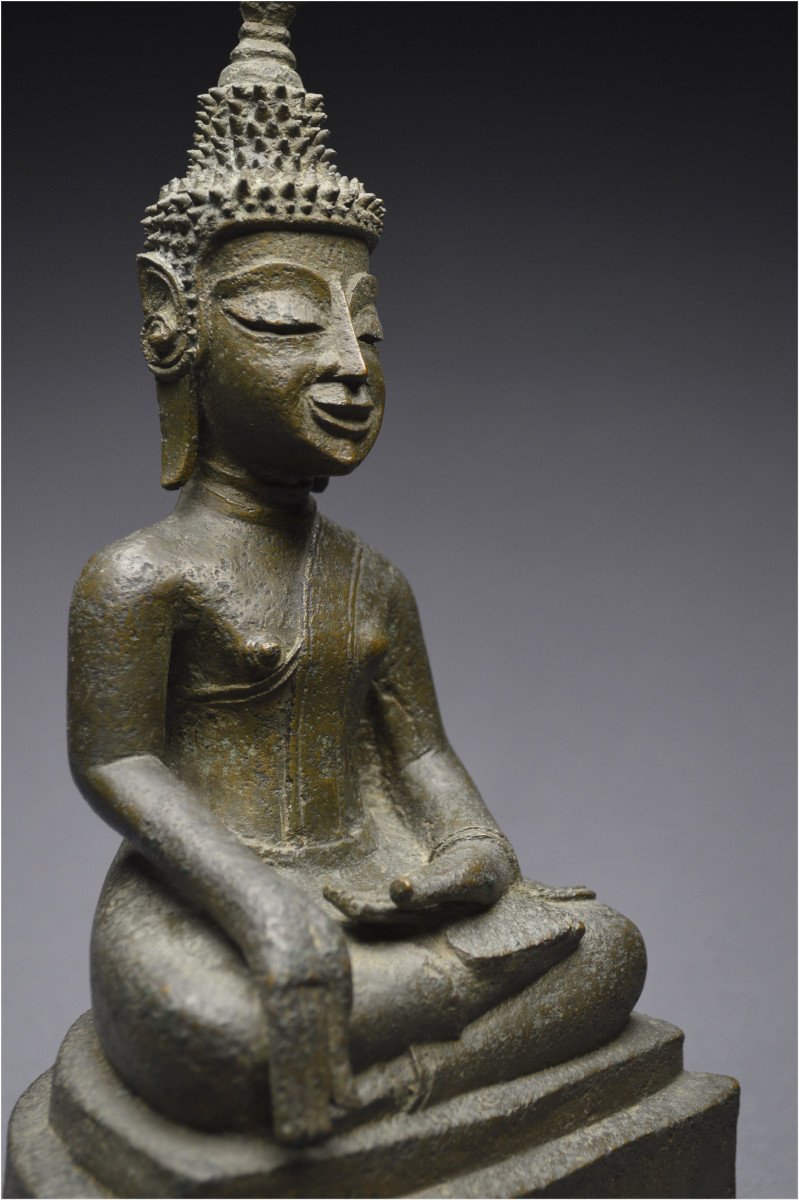


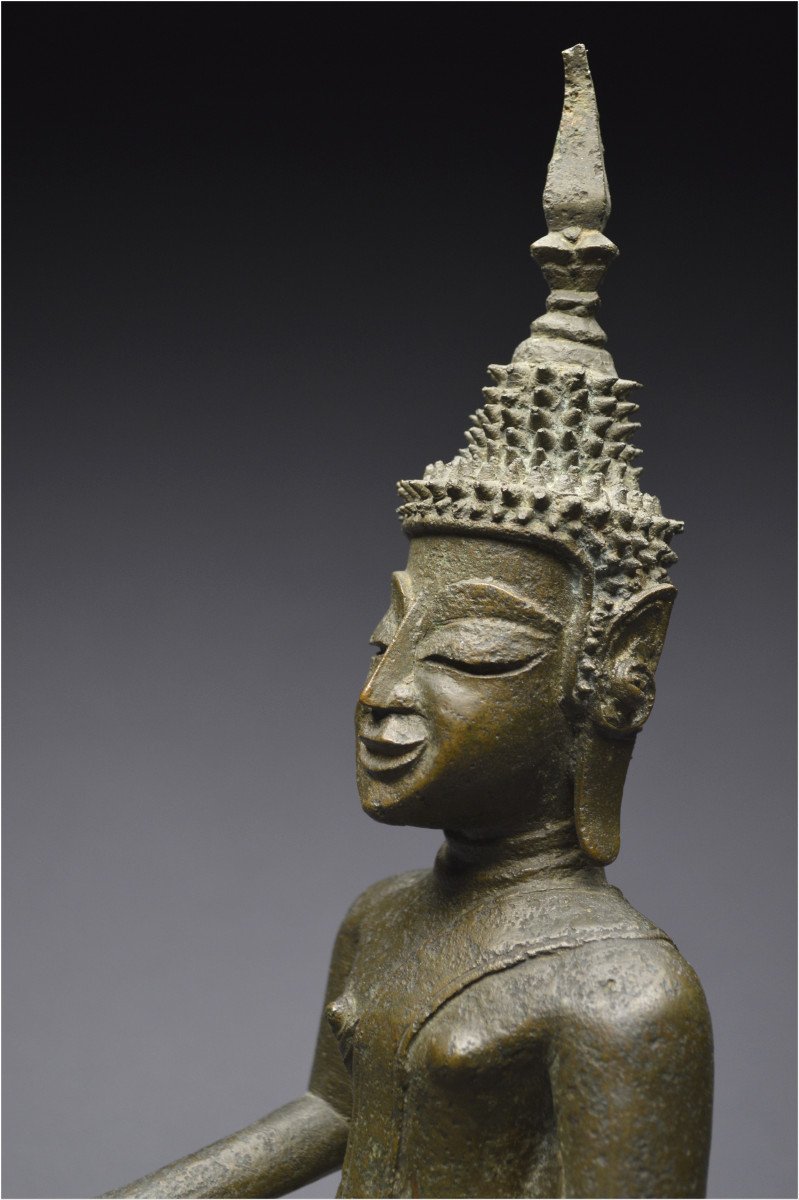
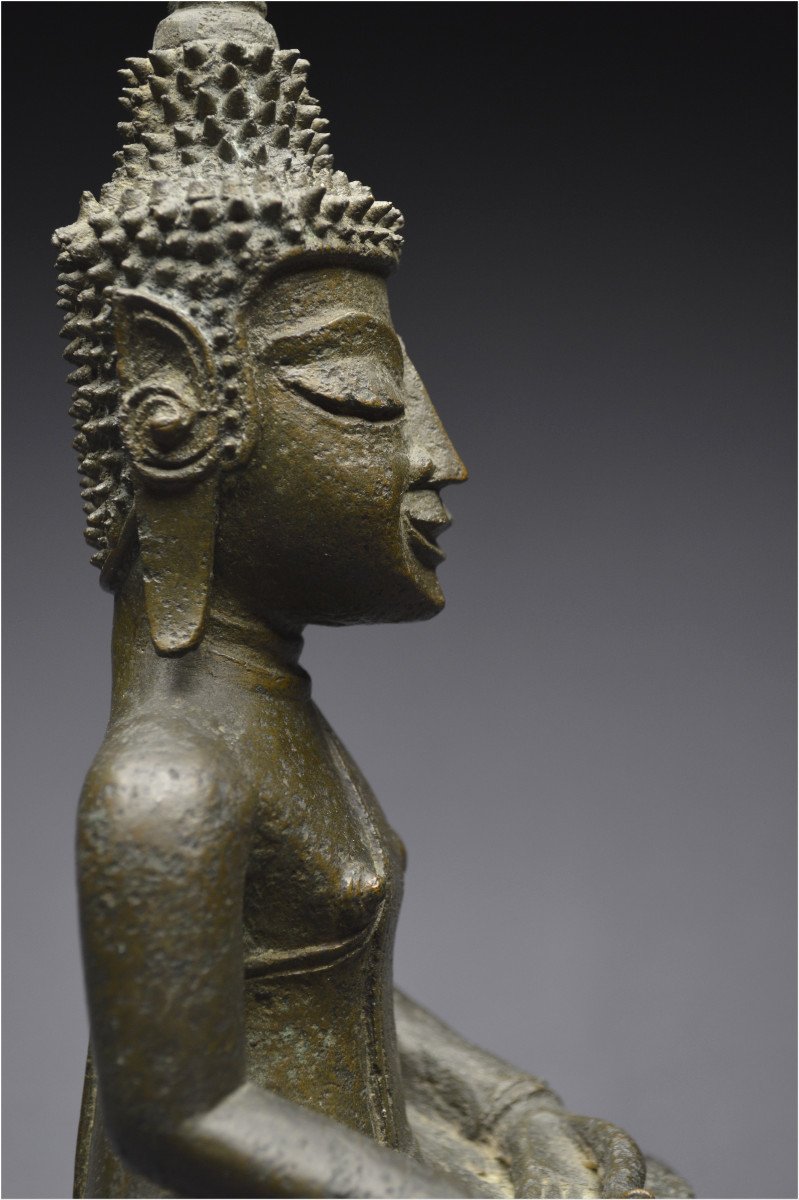
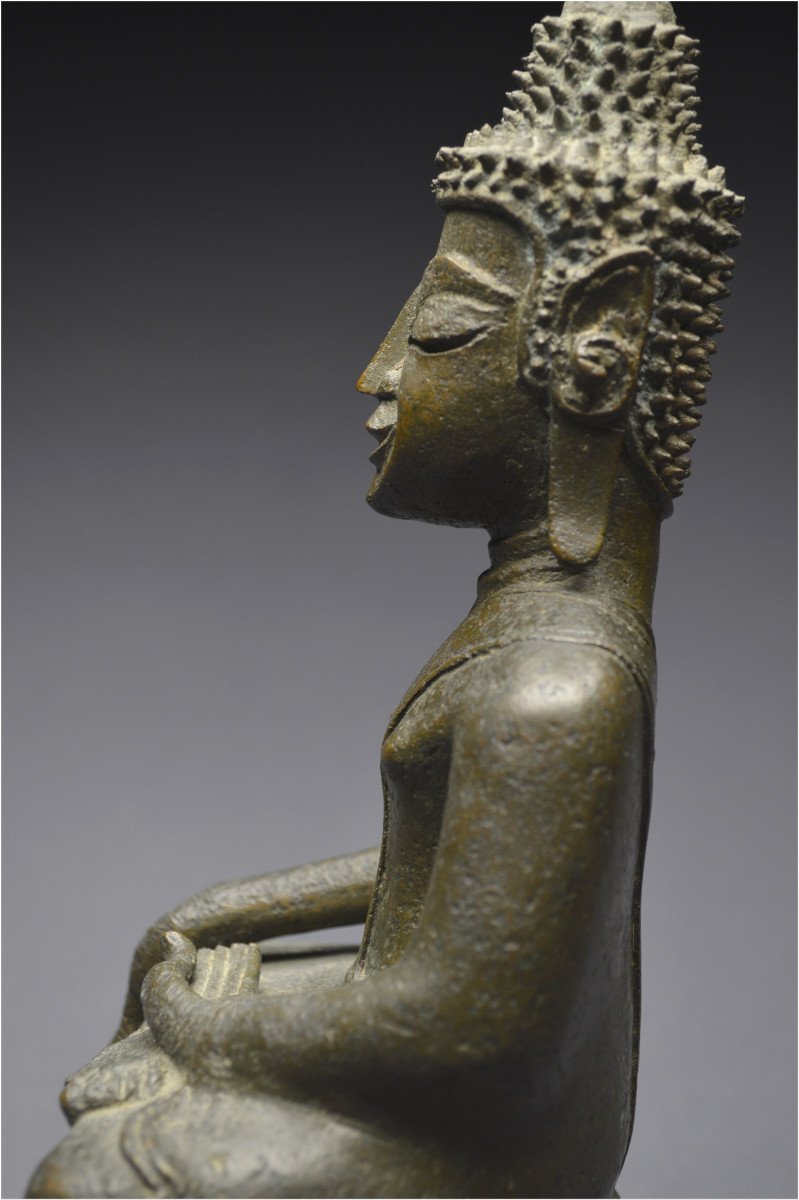

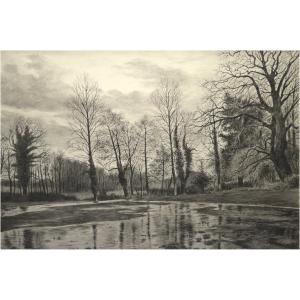
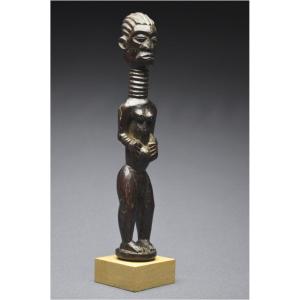



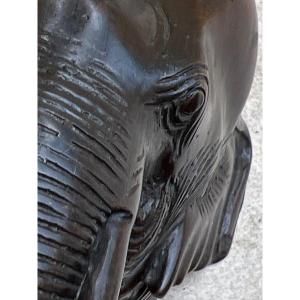








 Le Magazine de PROANTIC
Le Magazine de PROANTIC TRÉSORS Magazine
TRÉSORS Magazine Rivista Artiquariato
Rivista Artiquariato
